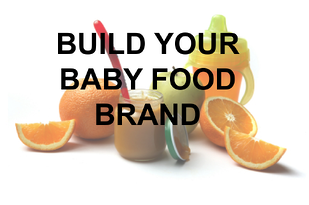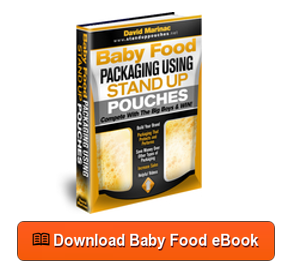Baby food packaging - not exactly the most interesting subject, is it? And certainly not for consumers. In  fact, it's tempting to think that consumers don't care about the packaging at all, which makes it tempting for you to assign less importance to packaging as well. Based on our standing in the packaging industry, we suggest ignoring packaging would be a mistake. Your choice of packaging may significantly impact consumer perception of your product line and, ultimately, your brand. There are, of course, many options available to you. Following are some of what we believe are important factors to consider when choosing the best style of baby food packaging to build your brand.
fact, it's tempting to think that consumers don't care about the packaging at all, which makes it tempting for you to assign less importance to packaging as well. Based on our standing in the packaging industry, we suggest ignoring packaging would be a mistake. Your choice of packaging may significantly impact consumer perception of your product line and, ultimately, your brand. There are, of course, many options available to you. Following are some of what we believe are important factors to consider when choosing the best style of baby food packaging to build your brand.
First things first: Safety. No matter which packaging option you ultimately choose, the most important factor must be product safety. After all, this is baby food we're talking about. With some of the recent scares connected to imported baby food, safety is no longer a foregone conclusion and consumers are more attentive to the issue than ever. Fortunately, domestic manufacturers are all subject to American regulatory requirements so safety is less of a worry. In other words, baby food produced and packaged in the US is almost always very safe. But we're talking about packaging safety here and, truth be known, not all packaging is created equally.
What do we mean by that? Well, let's examine the most common kind of packaging for baby food: Glass jars. Although a glass jar protects its contents relatively well, it obviously ceases being safe if it’s dropped or struck too hard. Flexible protective packaging, on the other hand, encounters no such problems. Constructed from multiple layers of scientifically-formulated film that have been laminated together, this protective packaging is strong, durable, and puncture-resistant. Of course, it should obviously go without saying that it's also shatterproof! This also makes it ideal for taking on-the-go (again, unlike glass jars).
In order to be effective, the packaging for baby food should also preserve the product shelf life. If there's a way to open and close a container after each use, that will do the trick. The problem with the lids of so many rigid containers (such as glass and plastic jars, for example) is that they often don't tighten securely, thereby permitting both spoilage (and spillage). Flexible packaging (let's take, for example, a stand up pouch) can be outfitted with optional zip lock closures that securely reseal the package after opening. For liquids, pour spouts and resealable caps are available for spouted stand up bags and other flexible varieties. All of these features are, by the way, extremely simple and convenient to use.
If you're reading this, we don't need to tell you how competitive the baby food market is and that being able to distinguish your brand in stores is a critical consideration of your overall marketing strategy. The design and construction of flexible protective packaging accommodates the following:
- Clear film, Mylar metalized film, or opaque foil structures
- Option of clear "window" insertion into opaque panel
- Custom printing in up to 12 colors tailored to your exact specifications
- Ability to affix product labels or other company stickers directly onto the packaging barrier
- Available round or sombrero-shaped hang holes for alternative store display
- The option of choosing some or all of these features.
Finally, the best style of baby food packaging should be environmentally friendly. Flexible protective packaging is just that and here's why:
- It's recyclable
- Despite the fact that it's comprised of multiple film layers, certain styles actually require up to 15 percent less material to make than other plastic packaging, resulting in less waste after disposal
- Because less material means less overall weight, flexible barrier baby food packaging requires less fuel/unit to transport, saving energy (not to mention money)
- Strong and fully functions as a package without the need for an inner liner or (as is the case for containers like glass jars), outer packaging for shipping. This eliminates the consumption of energy and materials normally required for the manufacture, shipping, storage, and disposal of extra packaging simply because there isn't any
- When empty, flexible barrier packaging takes up little more space in a landfill than a shipping envelope
As a rule of thumb, follow the 3P Principle…the right flexible protective packaging should protect your baby food, promote it and your company, and lead to a purchase. Trust your packaging professional for guidance and direction.







